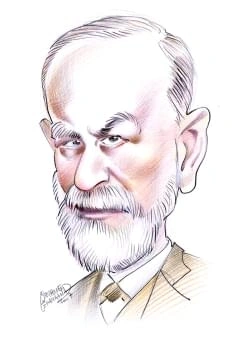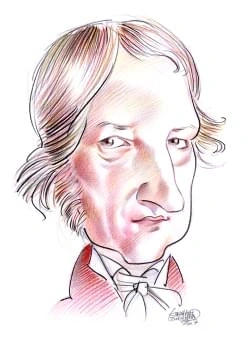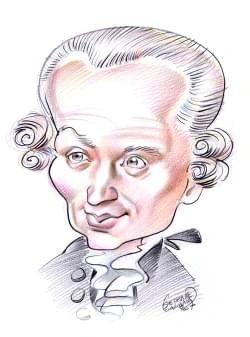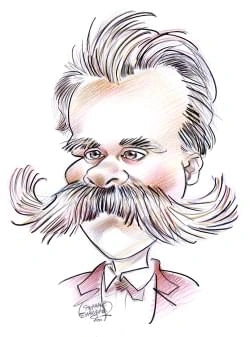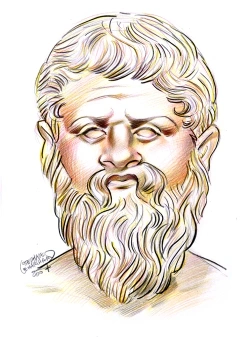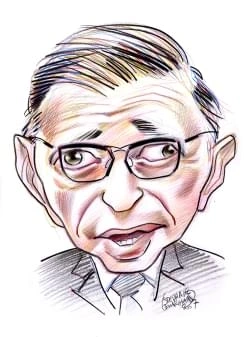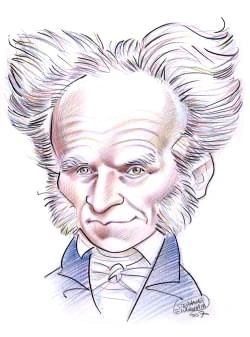583 résultats pour "those"
-
Accounting and Bookkeeping.
The proliferation of mandated notes that accompany financial statements is a particularly visible example. Such notes disclose information that is not already included inthe body of the financial statement. One of the very first notes identifies the accounting methods adopted when acceptable alternative methods also exist, or when theunique nature of the company's business justifies an otherwise unconventional approach. The notes also disclose information about lease commitments, contingent liab...
-
Orthodox Church.
formally defined by an ecumenical council, as it was in Catholicism, some Orthodox theologians have taught that the act of becoming a monk or the service of burial canalso be sacraments. The sacramental practice of the Orthodox differs in many details from Western customs. Baptism is administered by immersing the child or adult three times under thewater, each time in the name of one of the persons of the Trinity. It is followed immediately by anointment with chrism, a sacred perfumed oil that r...
-
Easter.
Many Easter traditions originated long before the beginning of the Christian era. Like Christmas, which is related to pre-Christian winter festivals, Easter is connected inmany ways with early pagan rituals that accompanied the arrival of spring. Easter is also associated with the Jewish festival of Passover. A Easter Eggs The Easter egg is associated with beliefs of particularly ancient origin. The egg was an important symbol in the mythologies of many early civilizations, including those ofIn...
-
Human Evolution.
Strepsirhines are the most primitive types of living primates. The last common ancestors of strepsirhines and other mammals—creatures similar to tree shrews andclassified as Plesiadapiformes—evolved at least 65 million years ago. The earliest primates evolved by about 55 million years ago, and fossil species similar to lemursevolved during the Eocene Epoch (about 55 million to 38 million years ago). Strepsirhines share all of the basic characteristics of primates, although their brains are notpa...
-
Human Evolution - biology.
classified as Plesiadapiformes—evolved at least 65 million years ago. The earliest primates evolved by about 55 million years ago, and fossil species similar to lemursevolved during the Eocene Epoch (about 55 million to 38 million years ago). Strepsirhines share all of the basic characteristics of primates, although their brains are notparticularly large or complex and they have a more elaborate and sensitive olfactory system (sense of smell) than do other primates. B Haplorhines B1 Tarsiers T...
-
Ear.
I
INTRODUCTION
Ear, organ of hearing and balance. Only vertebrates, or animals
line or rotates in any direction. Each canal also contains sensory areas with sensory hair cells that project into a cone-shaped cap of gelatin. Two of the semicircularcanals are in a vertical position and are used to detect vertical movement, such as jumping or falling. The third canal is horizontal and detects horizontal movement,such as turning or spinning. The action of the canals depends on the inertia of the fluid inside. When the motion of the body changes, the fluid lags behind, causing...
-
From Bush v.
legal requirements. This case has shown that punch card balloting machines can produce an unfortunate number of ballots which are not punched in a clean, complete way by the voter.After the current counting, it is likely legislative bodies nationwide will examine ways to improve the mechanisms and machinery for voting. B The individual citizen has no federal constitutional right to vote for electors for the President of the United States unless and until the state legislature chooses astatewide...
-
Race - biology.
distributed as a cline, generally varying along a north-south line. Skin color is lightest in northern Europeans, especially in those who live around the Baltic Sea, andbecomes gradually darker as one moves toward southern Europe, the Mediterranean, the Middle East, and into northern Africa and northern subtropical Africa. Skin isdarkest in people who live in the tropical regions of Africa. The lack of clear-cut discontinuities makes any racial boundary based on skin color totally arbitrary. Sim...
-
-
Russian Revolutions of 1917 (Histoire) .
as Marxists. They believed that the working class—with its struggles to organize trade unions and to bring about political reforms of benefit to the majority ofpeople—would become the primary force for revolutionary change. The Russian Marxists formed the Russian Social Democratic Labor Party (RSDLP) in 1898. By 1903,however, the RSDLP had split into two factions. The faction called the Bolsheviks (from the Russian word for “majority”), led by Vladimir Ilich Lenin, favored a more centralized a...
-
Laos - country.
by the year 2025. About one-quarter of Laos’s people live in mountainous regions. The rest live in upland valleys or on the flood plains of the Mekong and its tributaries.Just over three-quarters of the population live in rural areas, although the proportion of people living in urban areas is steadily increasing. Vientiane is the capital and largest city of Laos. Louangphrabang, the former royal capital, is an increasingly popular tourist destination. Other major cities are theregional capitals...
-
Ancient Egypt.
around 4500 BC. The style and decoration of the pottery found at these sites differ from those of pottery found in Upper Egypt. The northern type eventually fell out of use. Other differences between the peoples in Upper Egypt and Lower Egypt include the nature of their architecture and the arrangements for burial of the dead, thelatter perhaps signifying differing religious beliefs. B Unification and Early Dynastic Period By 3500 BC, the settlement of Hierakonpolis, located on the west bank...
-
Ancient Egypt - USA History.
around 4500 BC. The style and decoration of the pottery found at these sites differ from those of pottery found in Upper Egypt. The northern type eventually fell out of use. Other differences between the peoples in Upper Egypt and Lower Egypt include the nature of their architecture and the arrangements for burial of the dead, thelatter perhaps signifying differing religious beliefs. B Unification and Early Dynastic Period By 3500 BC, the settlement of Hierakonpolis, located on the west bank...
-
Rhode Island - geography.
C (73° F). Along the northern state line, the January mean temperature is about 1° C (about 2° F) colder than in Warwick in January. Along the ocean coast, theJanuary mean temperature is -1° C (30° F). Warm season temperatures are also influenced by the ocean and bay, so temperatures are usually cooler along the coastthan in the interior. The difference tends to be greatest in spring and early summer. Winter temperatures in Rhode Island are usually above -7° C (20° F), buttemperatures colder by...
-
Rhode Island - USA History.
C (73° F). Along the northern state line, the January mean temperature is about 1° C (about 2° F) colder than in Warwick in January. Along the ocean coast, theJanuary mean temperature is -1° C (30° F). Warm season temperatures are also influenced by the ocean and bay, so temperatures are usually cooler along the coastthan in the interior. The difference tends to be greatest in spring and early summer. Winter temperatures in Rhode Island are usually above -7° C (20° F), buttemperatures colder by...
-
West Virginia - geography.
Forests, mostly of hardwood varieties, cover 79 percent of West Virginia. The principal commercial species are the oak, yellow poplar, maple, birch, beech, black walnut,hickory, and gum. Softwoods include pines and hemlock firs. Flowering trees include the wild crab apple, dogwood, hawthorn, and redbud. Among the many floweringbushes and plants are the rhododendron, which is the state flower, the laurel, blueberry, hepatica, wild geranium, and black-eyed Susan. Insects and disease, mostly introd...
-
West Virginia - USA History.
Forests, mostly of hardwood varieties, cover 79 percent of West Virginia. The principal commercial species are the oak, yellow poplar, maple, birch, beech, black walnut,hickory, and gum. Softwoods include pines and hemlock firs. Flowering trees include the wild crab apple, dogwood, hawthorn, and redbud. Among the many floweringbushes and plants are the rhododendron, which is the state flower, the laurel, blueberry, hepatica, wild geranium, and black-eyed Susan. Insects and disease, mostly introd...
-
-
Native Americans of North America.
addition to smallpox and measles, explorers and colonists brought a host of other diseases: bubonic plague, cholera, typhoid fever, scarlet fever, pleurisy, mumps,diphtheria, pneumonia, whooping cough, malaria, yellow fever, and various sexually transmitted infections. Despite the undisputed devastation wreaked on Indian populations after European contact, native populations showed enormous regional variability in their response todisease exposure. Some peoples survived and, in some cases, even...
-
Native Americans of North America - Canadian History.
addition to smallpox and measles, explorers and colonists brought a host of other diseases: bubonic plague, cholera, typhoid fever, scarlet fever, pleurisy, mumps,diphtheria, pneumonia, whooping cough, malaria, yellow fever, and various sexually transmitted infections. Despite the undisputed devastation wreaked on Indian populations after European contact, native populations showed enormous regional variability in their response todisease exposure. Some peoples survived and, in some cases, even...
-
South Africa - country.
The major soil zones are conditioned largely by climatic factors. In the semiarid north and west, soils are alkaline and poorly developed. In the southern part of WesternCape Province, rain falls mostly in the winter months, and soils there form slowly and are generally thin and immature. The moderate temperatures and summer rainfallof the High Veld and eastern coastal areas create conditions for more productive organic decomposition, leading to dark, fertile soils, or chernozems, similar to tho...
-
Federal Republic of Germany - country.
B Rivers and Lakes Rivers have played a major role in Germany’s economic development. The Rhine River flows in a northwesterly direction from Switzerland through much of westernGermany and The Netherlands into the North Sea. It is a major European waterway and a pillar of commerce and trade. Its primary German tributaries include theMain, Mosel, Neckar, and Ruhr rivers. The Oder (Odra) River, along the border between Poland and Germany, runs northward and empties into the Baltic; it provides an...
-
Adolf Hitler
I
INTRODUCTION
Adolf Hitler (1889-1945), German political and military leader and one of the 20th century's most powerful dictators.
A Economic Collapse At the end of World War I, the Allies (those countries who had fought against Germany) had demanded that Germany pay reparations—that is, payments for wardamages. The government refused to pay all that was demanded by the Allies. When Germany failed to pay enough, France and Belgium occupied the coal mines in theRuhr industrial area in west central Germany in January 1923. In protest, the German government halted all reparation payments and called for passive resistance by a...
-
Adolf Hitler.
A Economic Collapse At the end of World War I, the Allies (those countries who had fought against Germany) had demanded that Germany pay reparations—that is, payments for wardamages. The government refused to pay all that was demanded by the Allies. When Germany failed to pay enough, France and Belgium occupied the coal mines in theRuhr industrial area in west central Germany in January 1923. In protest, the German government halted all reparation payments and called for passive resistance by a...
-
Adolf Hitler .
A Economic Collapse At the end of World War I, the Allies (those countries who had fought against Germany) had demanded that Germany pay reparations—that is, payments for wardamages. The government refused to pay all that was demanded by the Allies. When Germany failed to pay enough, France and Belgium occupied the coal mines in theRuhr industrial area in west central Germany in January 1923. In protest, the German government halted all reparation payments and called for passive resistance by a...
-
South Dakota - geography.
C1 Temperatures Average January temperatures are everywhere less than -4° C (24° F) and decrease to less than -12° C (10° F) in some northern sections. The January temperaturesin Sioux Falls range from -16° to -4° C (3° to 24° F). Nightime lows of -29° C (-20° F) occur during most winters. July averages are in the low and middle 20°s C (lowand middle 70°s F) throughout most of the state, and are somewhat lower in the Black Hills. The average temperature range in Sioux Falls in July is 17° to 30...
-
-
South Dakota - USA History.
C1 Temperatures Average January temperatures are everywhere less than -4° C (24° F) and decrease to less than -12° C (10° F) in some northern sections. The January temperaturesin Sioux Falls range from -16° to -4° C (3° to 24° F). Nightime lows of -29° C (-20° F) occur during most winters. July averages are in the low and middle 20°s C (lowand middle 70°s F) throughout most of the state, and are somewhat lower in the Black Hills. The average temperature range in Sioux Falls in July is 17° to 30...
-
Turkey - country.
has a general elevation of 900 to 1,500 m (3,000 to 5,000 ft) above sea level. The eastern highlands region is the most mountainous and rugged portion of Turkey; Mount Ararat (Ağrı Da ğı) is the highest peak in the country at 5,165 m (16,945ft). Many Christians and Jews believe it to be the same Mount Ararat mentioned in the Bible as the place where Noah’s ark came to rest. The eastern highlands are thesource for both the Tigris (Dicle) and Euphrates (Fir āt)—two of southwestern Asia’s principal...
-
Labor Unions in the United States - U.
National Guard troops were used against the strikers, with the result that the strike was lost and the union that conducted it virtually destroyed. In 1894 a strike by theAmerican Railway Union against the Pullman Palace Car Company was defeated by an injunction issued under the Sherman Antitrust Act of 1890, which made acombination or contract in restraint of trade illegal. Thereafter employers used injunctions with increasing frequency and effectiveness as an antistrike weapon. See also Hours...
-
Holocaust
I
INTRODUCTION
Holocaust, the almost complete destruction of Jews in Europe by Nazi Germany and its collaborators during World War II (1939-1945).
relation to the Jews. He claimed that the Jews had achieved economic dominance and the ability to control and manipulate the mass media to their own advantage. Hewrote of the need to eradicate their powerful economic position, if necessary by means of their physical removal. IV UNIQUENESS OF NAZI ANTI-SEMITISM The linking of anti-Semitic accusations to race struggle is what made Nazism so genocidal. The Nazis believed the Jews were responsible for what they regarded as thedegeneracy of modern...
-
Holocaust .
relation to the Jews. He claimed that the Jews had achieved economic dominance and the ability to control and manipulate the mass media to their own advantage. Hewrote of the need to eradicate their powerful economic position, if necessary by means of their physical removal. IV UNIQUENESS OF NAZI ANTI-SEMITISM The linking of anti-Semitic accusations to race struggle is what made Nazism so genocidal. The Nazis believed the Jews were responsible for what they regarded as thedegeneracy of modern...
-
San Francisco - geography.
recognized symbol of the city, opened in 1937. It connects San Francisco to Marin County to the north, one of the wealthiest suburban areas in the nation. With the construction of the Bay and Golden Gate bridges and other links from the city to its suburbs, the San Francisco Bay area has become one large metropolitanregion. San Francisco itself is only 122 sq km (47 sq mi) of land area, but the city’s Primary Metropolitan Statistical Area (defined by the Census Bureau as SanFrancisco, San Mateo,...
-
Psychotherapy.
Other managed-care companies pay therapists a set fee to meet with a client for up to a specified maximum number of sessions depending on the nature of theproblem, free of interference from case reviewers. For example, a managed-care firm may pay a therapist $200 to hold up to eight sessions with a person. If the clientuses all eight sessions, the therapist normally loses money. But if treatment stops after two or three sessions, the therapist makes a profit. This relatively new system iscontrov...
-
Thailand - country.
E Natural Resources Thailand possesses a range of mineral resources. Tin is mined in the peninsula. Important gemstones, such as sapphires, are found in the southeast, and coal reserves,particularly lignite, are in the north. Fish are abundant in rivers and coastal waters. In addition to being consumed domestically, fish are also exported. F Climate Thailand experiences a typical monsoon climate. Winds blow from the northeast during the winter months of October to March or April (known as the...
-
-
From The Scarlet Letter - anthology.
“Mercy on us, goodwife,” exclaimed a man in the crowd, “is there no virtue in woman, save what springs from a wholesome fear of the gallows? That is the hardestword yet! Hush, now, gossips; for the lock is turning in the prison-door, and here comes Mistress Prynne herself.” The door of the jail being flung open from within, there appeared, in the first place, like a black shadow emerging into the sunshine, the grim and grisly presence ofthe town-beadle, with a sword by his side and his staff...
-
Western Philosophy.
the popular belief in personal deities, but he failed to explain the way in which the familiar objects of experience could develop out of elements that are totally differentfrom them. Anaxagoras therefore suggested that all things are composed of very small particles, or “seeds,” which exist in infinite variety. To explain the way in whichthese particles combine to form the objects that constitute the familiar world, Anaxagoras developed a theory of cosmic evolution. He maintained that the activ...
-
Human Disease.
disease can be transmitted through food infected with mutated proteins. B Spread of Infectious Disease Some pathogens are spread from one person to another by direct contact. They leave the first person through body openings, mucous membranes, and skin wounds,and they enter the second person through similar channels. For example, the viruses that cause respiratory diseases such as influenza and the common cold are spreadin moisture droplets when an infected person coughs or sneezes. A hand that...
-
Great Depression in the United States - U.
prices would continue to rise and they could soon sell their stocks at a profit. The widespread belief that anyone could get rich led many less affluent Americans into the market as well. Investors bought millions of shares of stock “on margin,” arisky practice similar to buying products on credit. They paid only a small part of the price and borrowed the rest, gambling that they could sell the stock at a highenough price to repay the loan and make a profit. For a time this was true: In 1928 the...
-
History of United States Business.
their lives. But the rewards were worth it; a few lucrative voyages and a merchant could buy a townhouse, a carriage, perhaps a summer retreat. The merchant couldclimb the social ladder and circulate among the powerful in this highly materialistic society. This prospect of riches and the honor that accompanied them made Americancolonists willing to engage in highly speculative enterprises, such as shipping flour to the West Indies or importing goods from England by the thousands without beingcer...
-
Colonialism and Colonies.
by plundering the riches of existing civilizations in the Americas and by seizing the area’s mineral wealth through mining. These practices were promoted by the policy of mercantilism that many European colonial powers adopted. Those who advocated mercantilism believed that exports toforeign countries were preferable both to trade within a country and to imports because exports brought more money into the country. They also believed that thewealth of a nation depended primarily on the possession...
-
Colonialism and Colonies .
by plundering the riches of existing civilizations in the Americas and by seizing the area’s mineral wealth through mining. These practices were promoted by the policy of mercantilism that many European colonial powers adopted. Those who advocated mercantilism believed that exports toforeign countries were preferable both to trade within a country and to imports because exports brought more money into the country. They also believed that thewealth of a nation depended primarily on the possession...
-
Anthropology.
humans, such as tools, pottery, and buildings) and human fossils (preserved bones). They also examine past environments to understand how natural forces, such as climate and available food, shaped the development of human culture. Some archaeologists study cultures that existed before the development of writing, a time knownas prehistory . The archaeological study of periods of human evolution up to the first development of agriculture, about 10,000 years ago, is also called paleoanthropology....
-
-
Criminal Law.
for rehabilitative treatment for the offender. On the other hand, the goals of punishment may at times conflict. The retributive and deterrence theories call for theinfliction of unpleasant experiences upon the criminal, including harsh prison treatment; but the prison environment may not be conducive to, or may even defeat,rehabilitation. No one theory of punishment addresses all the goals of criminal law. A combination of theories and goals plays a part in the thinking of the legislators who e...
-
American Literature: Poetry
I
INTRODUCTION
Phyllis McGinley
American poet and author Phyllis McGinley composed light, witty verse, much of which deals with family life.
Taylor, a poet of great technical skill, wrote powerful meditative poems in which he tested himself morally and sought to identify and root out sinful tendencies. In“God's Determinations Touching His Elect” (written 1680?), one of Taylor’s most important works, he celebrates God's power in the triumph of good over evil in thehuman soul. All of Taylor’s poetry and much of Bradstreet’s served generally personal ends, and their audience often consisted of themselves and their family andclosest frie...
-
Geography - Geography.
Geographers have developed a standard pattern of map symbols for identifying such cultural features as homes, factories, and churches; dams, bridges, and tunnels;railways, highways, and travel routes; and mines, farms, and grazing lands. C Analyzing Geographic Information Techniques that use mathematics or statistics to analyze data are known as quantitative methods. The use of quantitative methods enables geographers to treat a largeamount of data and a large number of variables in an objectiv...
-
International Law.
merchants), modernized the rights of neutrals during maritime war, and required blockades to be effective. The Declaration of Paris also initiated the practice of allowingnations other than the original signatories to accede (become a party to) to an agreement. In 1864 a conference convened in Geneva, Switzerland, at the invitation of the Swiss government. The conference approved a convention for the proper treatment ofwounded soldiers on the battlefield and the protection of medical personnel;...
-
Aboriginal Australians - History.
Until Europeans began to settle in Australia in 1788, the Aboriginal way of life was supported by hunting, gathering, and fishing. Like other hunting and gatheringpeoples, Aboriginal people had an extremely detailed knowledge of their environment, especially plant ecology and animal behavior. The deep connection betweenAboriginal people and the natural world influenced every part of their culture, including their food gathering, tools, trade, religion, art, music, language, and socialorganizatio...
-
Saudi Arabia - country.
C Natural Resources Some of the world’s largest oil and natural gas fields lie beneath Saudi Arabia and its offshore waters, representing the country’s most economically important naturalresource. In 2007 Saudi Arabia’s oil reserves were estimated at 264 billion barrels. Before the discovery and exploitation of these reserves in the mid-20th century,Saudi Arabia was one of the poorest countries in the world. Its relatively small population subsisted in a harsh environment with little agricultur...
-
Pennsylvania - geography.
B Rivers and Lakes There are three major river basins in Pennsylvania: the Susquehanna, the Ohio, and the Delaware. Together they drain more than 90 percent of Pennsylvania’s landarea. Most of eastern and central Pennsylvania is drained by the Susquehanna and Delaware systems. The western part of the state is drained by the Allegheny andMonongahela rivers, which join at Pittsburgh to form the Ohio. In addition to the three major river basins, short streams flowing into Lake Erie drain the north...
-
Pennsylvania - USA History.
B Rivers and Lakes There are three major river basins in Pennsylvania: the Susquehanna, the Ohio, and the Delaware. Together they drain more than 90 percent of Pennsylvania’s landarea. Most of eastern and central Pennsylvania is drained by the Susquehanna and Delaware systems. The western part of the state is drained by the Allegheny andMonongahela rivers, which join at Pittsburgh to form the Ohio. In addition to the three major river basins, short streams flowing into Lake Erie drain the north...
-
-
New Mexico - geography.
New Mexico’s major river is the Río Grande, originating in southern Colorado, and flowing southward for 760 km (470 mi) through the state. Between the San LuisValley and Española Valley the river flows in a deep canyon known as the Río Grande Gorge; then, below White Rock Canyon, it flows through several valleys containingagricultural land. Most of the water of the Río Grande is used to irrigate these valleys. The Río Grande’s waterflow in New Mexico is extremely low. One of the major tributarie...
-
New Mexico - USA History.
New Mexico’s major river is the Río Grande, originating in southern Colorado, and flowing southward for 760 km (470 mi) through the state. Between the San LuisValley and Española Valley the river flows in a deep canyon known as the Río Grande Gorge; then, below White Rock Canyon, it flows through several valleys containingagricultural land. Most of the water of the Río Grande is used to irrigate these valleys. The Río Grande’s waterflow in New Mexico is extremely low. One of the major tributarie...
}})
